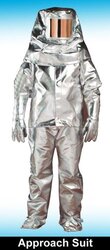Burning for the first time overnight with my new Englander NC30 was quite an experience and I learned something very important. I mistakenly tried to load it up for the night like I have done many times with the old non EPA woodstove at camp. I packed seven splits on a very hot bed of coals, let it get back up to temperature for a few minutes and then closed the draft all the way (at 500 degress) to bank it for the night. Bad idea....too much wood! Once my secondaries kicked in the stove temp began rising as you would expect, but with so much wood the stove just would not settle in even with the draft closed all the way....hits 550(I'm hoping its peaking)......hits 600(I am beginning to get mildly concerned as the fire rages with draft closed all the way and doesn't seem to be slowing down)....hits 650(now I am beginning to poop a brick as it seems to just be getting angrier).....At this point I began asking the divine for assistance to calm this stove down and I am not a very religious person. The only thing I could think of was to dive behind the stove and plug up the hole that is designed to hook an outside air kit to. Luckily that was enough to stop the monster from going any hotter heading south from a high of about 675. It was a very stressful hour....finally around 1:30 am I was able to drag myself (poop stenched pants and all) to bed. Lesson learned...bank for the night with 3 or 4 splits, not seven!
Anyone else have that happen to them and is there something else I could have done to help for the future?
Anyone else have that happen to them and is there something else I could have done to help for the future?



